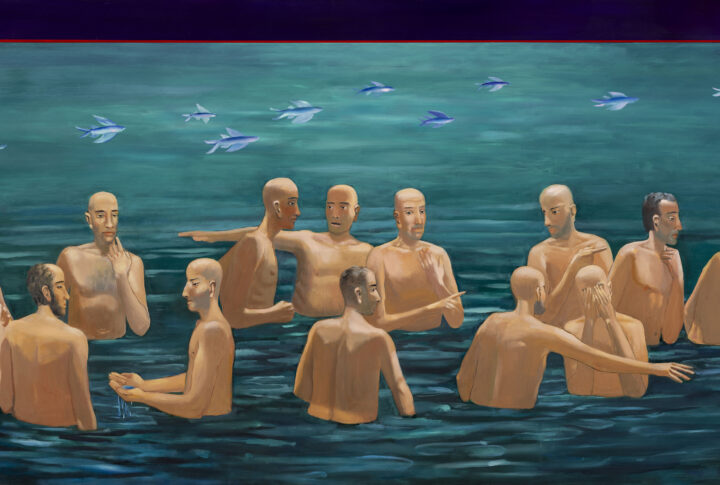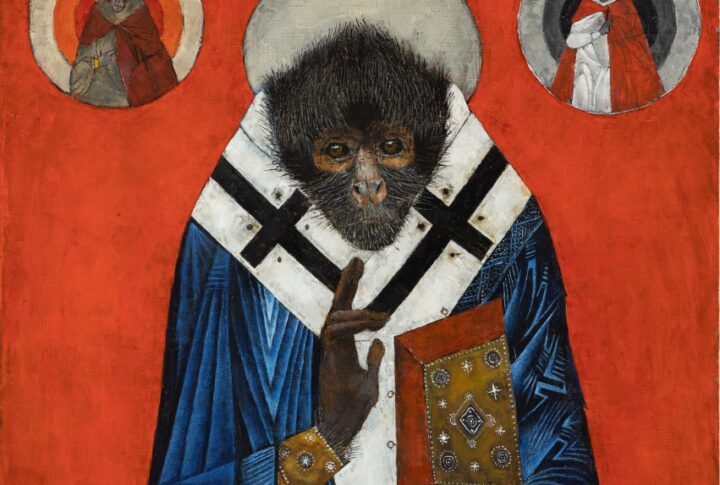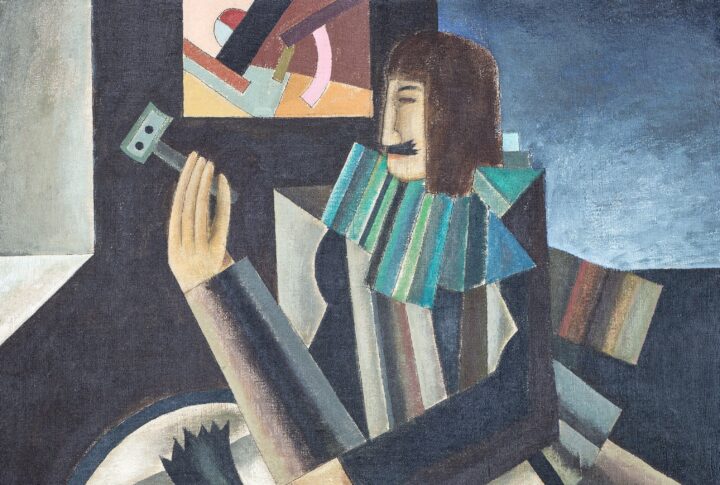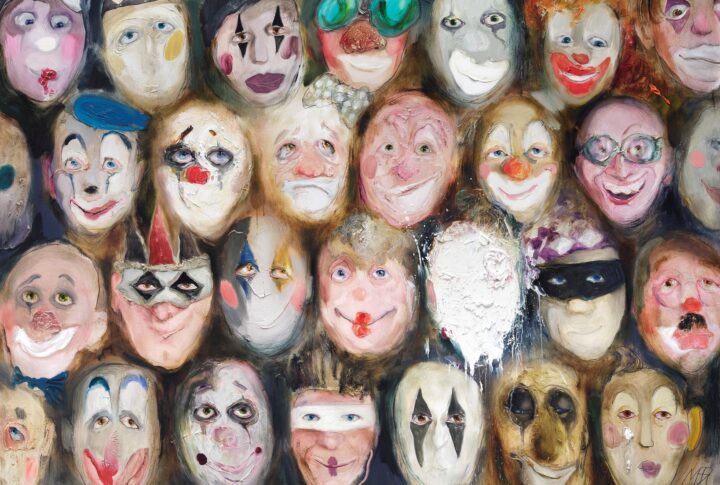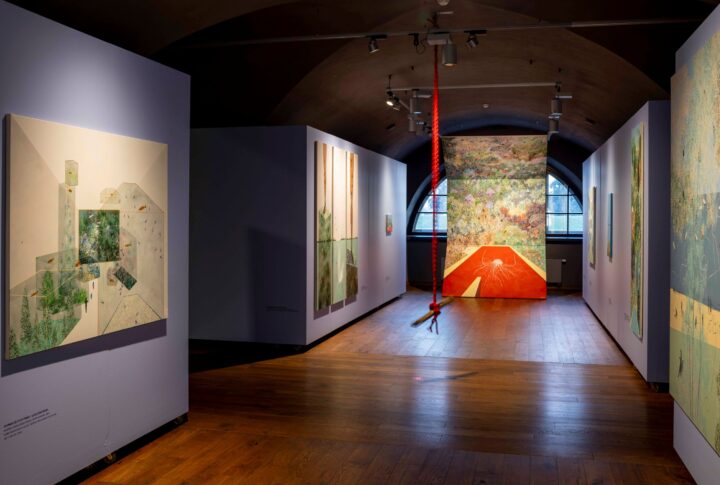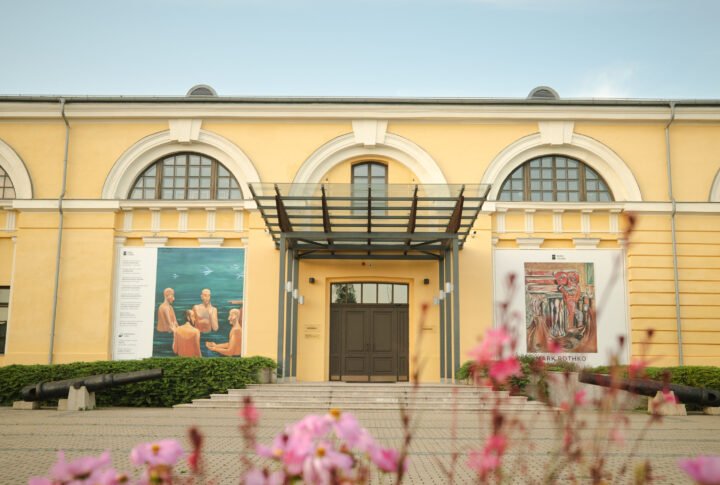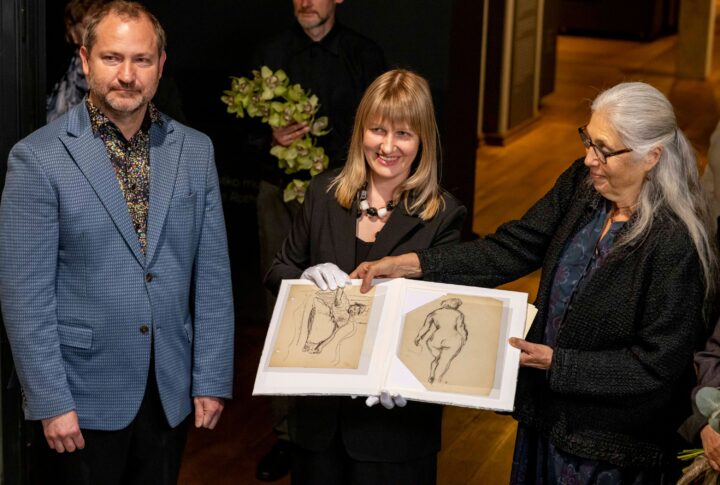Rothko Museum Poised to Dazzle with Summer Exhibition Season
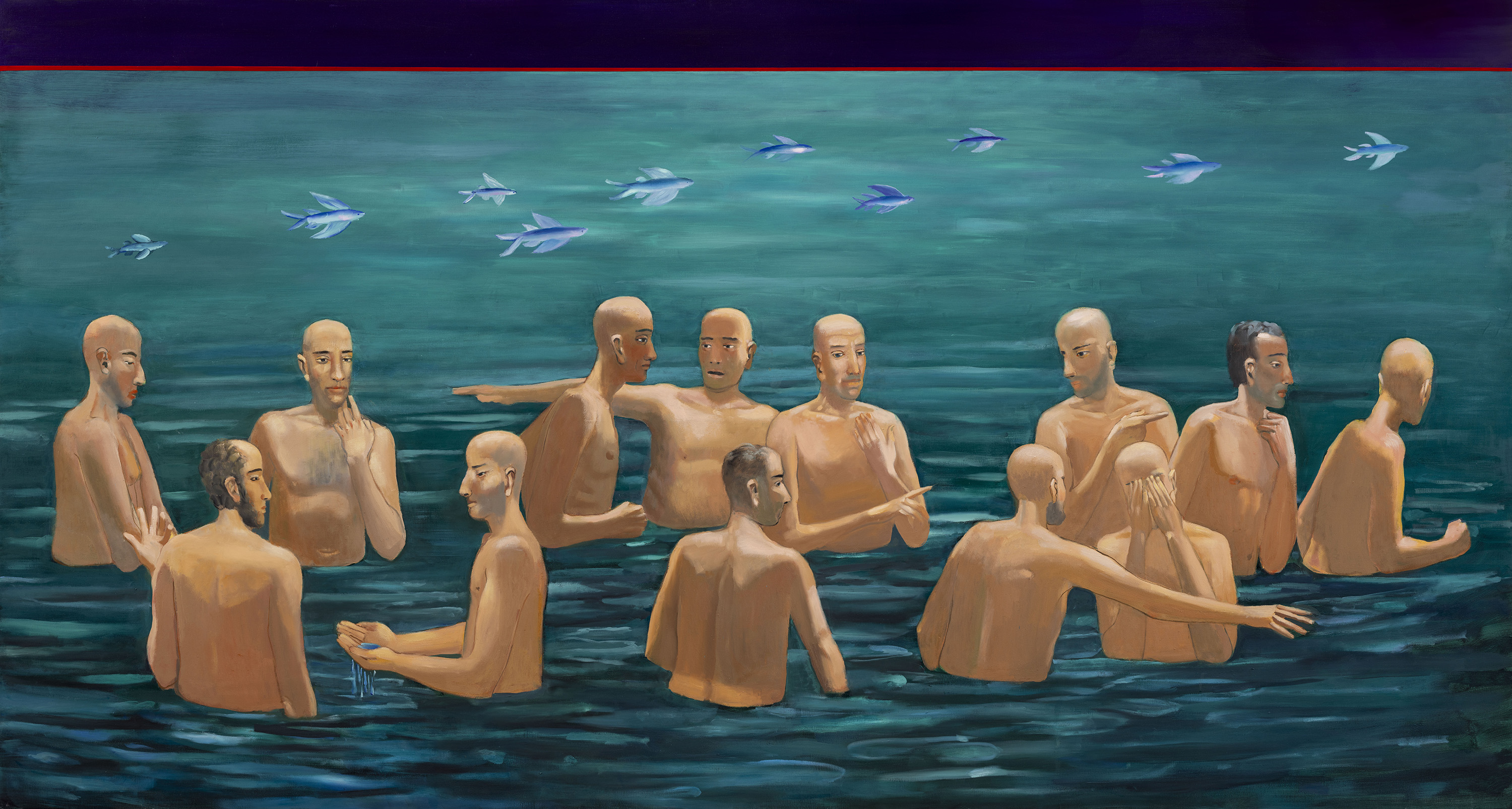
At 4 p.m. on Friday, 30 May, the Rothko Museum will unveil its summer exhibition season with six compelling and distinctive projects. From the chromatically layered compositions of Kaspars Zariņš and the provocative visual inquiries of Sergey Dyomin to the meditative graphic language of Lithuanian artist Vaidotas Janulis, the programme promises a richly nuanced encounter with contemporary artistic expression. Also featured are a commemorative exhibition honouring the Daugavpils artist Leonid Baulin, a tribute to the creative legacy of the renowned Latvian ceramicist Violeta Jātniece, and a luminous glimpse into the heritage of Chinese art and craftsmanship with “Oriental Elegance”.
“Ordo Mundi” by Kaspars Zariņš
Kaspars Zariņš stands out as a singular figure in contemporary Latvian art, with a distinctive ability to integrate at least three major artistic lineages into a cohesive stylistic framework. His practice merges the harmonious principles of Renaissance art, the provocative and often unsettling “anti-art” narratives of Modernism, and the compromise-seeking aesthetics of contemporary practice.
Titled “Ordo Mundi”, Latin for “The Order of the World”, the exhibition is arranged into three thematic strands: fountains, flowers, and figurative groupings. What may initially appear as a singular field of colour gradually reveals itself as an elaborate layering of nuanced tones and harmonies – unmistakably the artist’s signature style. According to the project’s curator, art historian Inga Šteimane, in his first solo exhibition at the Rothko Museum, Zariņš employs colour as an expressive lexicon, projecting chromatic narratives onto structural frameworks.
“I want to paint everything with colour,” he declares, challenging the idea that expert colourists struggle with form. Zariņš vehemently dismisses the notion: “That’s nonsense. Colour painting does not rule out the representation of depth, nor does form exclude the use of colour. It’s just that less accomplished artists simply fail to harmonise the two.”
“Painting” by Sergey Dyomin
Sergey Dyomin’s exhibition at the Rothko Museum bears the succinct title “Painting”, and that is precisely its message. It reflects the artist’s passion for what he loves and where he excels. As expressed by the project’s curator, Aivars Baranovskis, while the works may spark reflection on themes such as Darwinism, the intertwining of religion and power, or the questionable use of primates in scientific research critiqued through such concepts as justice and truth, Dyomin’s paintings ultimately lead the viewer inward. The enduring truth, he suggests, lies in the ability to recognise oneself – one’s questions, sensitivities and struggles – in what is seen. And Dyomin does not shy away from that recognition – he observes with quiet curiosity what else the viewer will discover in his painting.
“In the vast cosmic soup in which we all simmer, we’ve been granted the rare and random privilege of experiencing life. Nothing more, nothing less. Becoming a painter, too, was a matter of chance. At some point, I discovered joy in the simple act of drawing. Later, I couldn’t imagine life without it – everything else faded into insignificance. There is deep fulfilment in creating something, in the pure pleasure of the process. That is why I still cannot conceive of an existence untouched by the act of painting. Although it has become part of my daily rhythm – its finest part – it continues to ignite something within me each time I return to it. It allows me to feel truly alive,” the artist says.
“Black Silent Graphics” by Vaidotas Janulis
The experienced Lithuanian artist Vaidotas Janulis returns to the Rothko Museum with a solo exhibition whose graphic narrative is drawn from his work over the past five years. The show invites the viewer on a journey through what the artist calls his ‘black collection’, unfolding in two distinct yet deeply interconnected parts: envelope assemblages and silkscreen compositions that speak in the language of signs and objects.
“As the viewer navigates the exhibition, communication unfolds through the gaze. What do the gaze and the letter have in common? Both perform the same communicative function… But what if both glances and letters are hidden, sealed within envelopes? You close the envelope, then close your eyes; deep darkness prevails, yet the images remain. The black turns out to be coloured,” the artist reflects.
The timeless charm of “Oriental Elegance”
Produced in collaboration with the Tianjin Museum, China, the exhibition reveals the unique charm of Chinese porcelain, painting, and calligraphy, primarily from the 1200s to the 1800s, and illuminates aspects of Tianjin’s cultural heritage.
Chinese painting, the quintessence of traditional Chinese art, uses little more than a brush, paper, ink, and natural pigments to depict both the outer world and the inner self. Simultaneously practical and poetic, Chinese calligraphy is a refined art form revealing the expressive beauty of written characters. Meanwhile, porcelain – the art of clay and fire – was a closely guarded secret for centuries.
The display includes classical blue-and-white porcelain vessels, intricately decorated famille-rose porcelain objects and meticulously enamelled porcelain pieces that radiate courtly grandeur, luxurious beauty and time-defying elegance.
“The Art Laboratory” of Leonid Baulin
Marking what would have been the 80th birthday of Leonid Baulin (1945–2002), this exhibition celebrates an artist whose creativity was deeply rooted in Daugavpils throughout the 1970s, ’80s and ’90s. Drawn from the artist’s family collection, the show features handpicked artworks from Baulin’s extensive legacy, some never exhibited to the public and revealing the breadth of his artistic practice.
In painting, Baulin emphasised the subtle interplay of form and the fleeting qualities of light. His graphic output is equally striking, notable for its thematic diversity, refined linework and inventive spatial constructions. However, it is in the graphic medium that Baulin’s unique artistic voice shines brightest, characterised by skilful geometric stylisation and poignant lyrical nuance laced with a touch of playful irony.
“For every artist, the graphic medium is a creative laboratory where ideas take shape, technical mastery is refined, and new methods are explored. (..) Baulin’s drawings are at once expressive, elegant, and weightless. Through fluid, unforced penwork, he crafted a unique vision of the world, where lines, shapes and empty spaces engage in a dynamic dance, intersecting, converging and swaying in a smooth, perpetual flow,” notes art historian Ksenija Rudzīte.
“Summer” by Violeta Jātniece
Presented in collaboration with the Latvian National Museum of Art, this exhibition pays tribute to Violeta Jātniece (1939–2024), one of the leading figures in Latvian contemporary ceramics during the second half of the twentieth century. A prominent member of the legendary Ķīpsala Ceramics Studio, where she worked alongside Pēteris Martinsons, a legend of Latvian contemporary ceramics, Jātniece produced work that radiates vitality and spirit. Her confident forms and richly textured surfaces – often in hues of orange, red, and sun‑warmed earth – convey a powerful feminine energy and vitality.
“My inspiration lies in the rhythms and textures of nature – steep landfalls, furrowed fields, or windswept patterns on a sandy shore, their perfect silhouettes and colour schemes. I also draw from architectural constructions, their strong proportions and intrinsic harmony,” she used to say.
On view at the Rothko Museum’s Martinsons House, the exhibition draws subtle connections between the legacy of the distinguished Latvian ceramicist Pēteris Martinsons (1931–2013) and the creative explorations of his colleagues and contemporaries.
Exhibition Dates and Opening Night
The Rothko Museum’s summer season runs from 30 May to 24 August 2025. Two exhibitions – “Black Silent Graphics” by Vaidotas Janulis and “Ordo Mundi” by Kaspars Zariņš – will close a week earlier, on 17 August.
Admission is free on opening night.
The Rothko Museum’s summer exhibition season was prepared in partnership with the Latvian National Museum of Art and the Latvian Centre for Contemporary Ceramics, the Tianjin Museum and the Chinese Embassy in Latvia, Zuzeum Art Centre and Bastejs Gallery, with valued support from the State Culture Capital Foundation of Latvia, Daugavpils City Council, “Valmiermuiža”, “Devona” and “Caparol”.
Publicity images:
Kaspars Zariņš. “Assembly I”. Oil on canvas (detail). 150 x 280 cm. 2025.
Sergey Dyomin. “Spider Monkey”. Oil on canvas. 90 x 70 cm (detail). 2021. Photo Oleg Zernov.
Vaidotas Janulis. “Flying in the Waves”. Silkscreen. 70 x 100 cm. 2020.
Qiu Ying. “Immortal Realm of the Peach Blossom Land”. 175 x 66.7 cm (detail). 16th century. The Tianjin Museum Collection.
Leonid Baulin. “At Home”. Oil on canvas. 96 x 80 cm (detail). 1998.
Violeta Jātniece. “Bottles”. Chamotte, glaze. Varied sizes (detail). 1990. Collection of the Latvian National Museum of Art.

